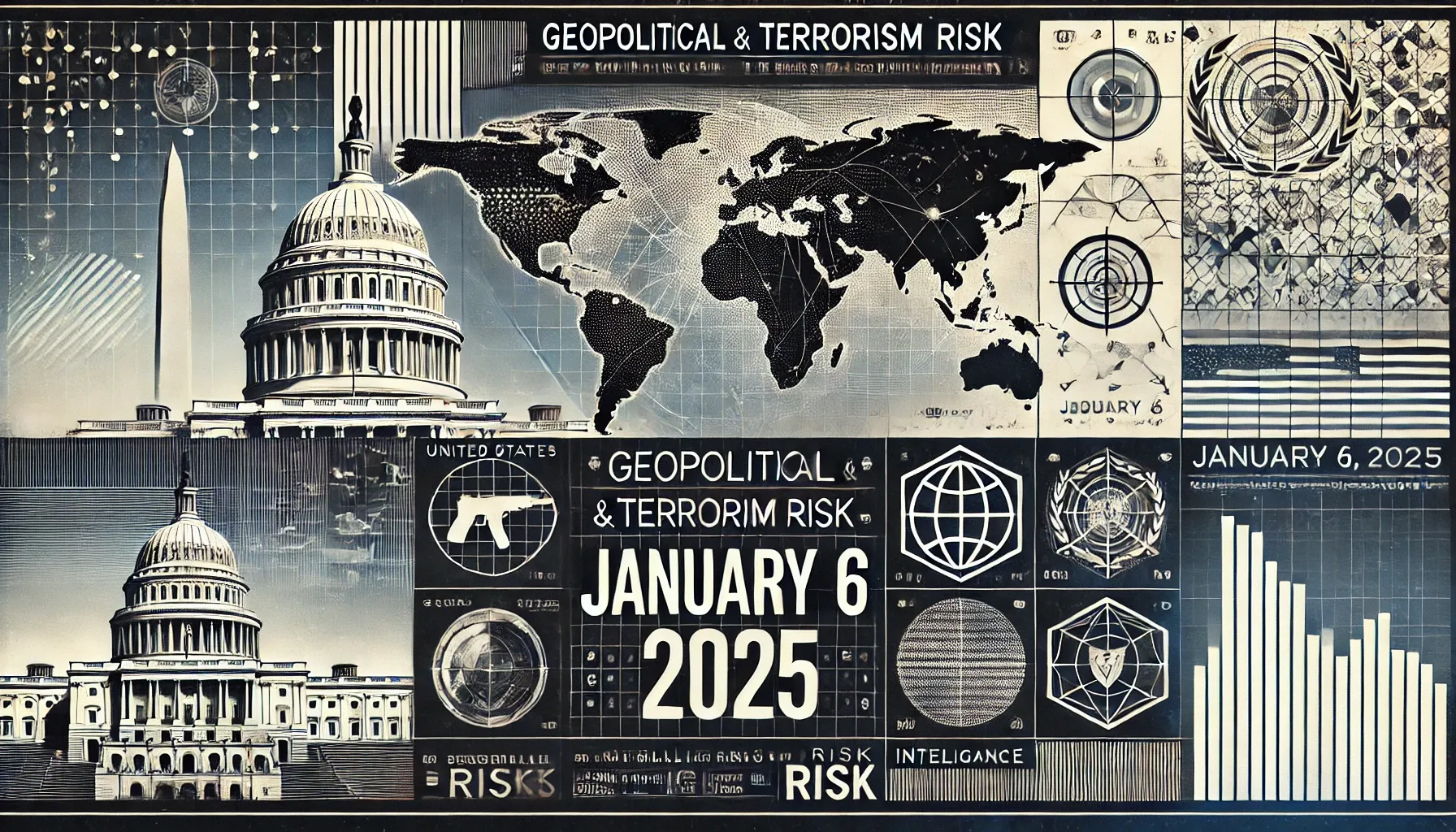Prime Rogue Daily Risk Report: January 6, 2025
Executive Summary
January 6, 2025, is marked by significant historical anniversaries and current geopolitical developments that influence the global security landscape. The anniversary of the January 6, 2021, Capitol attack in the United States serves as a poignant reminder of domestic unrest, while recent geopolitical tensions, including the inauguration of Donald Trump’s second term and escalating conflicts in various regions, contribute to an unpredictable environment. Stakeholders are advised to remain vigilant, reassess security protocols, and stay informed about evolving threats.
1. Historical Significance and Symbolism
- Anniversary of the U.S. Capitol Attack (2021): On January 6, 2021, supporters of then-President Donald Trump stormed the U.S. Capitol in an attempt to overturn the 2020 presidential election results. This unprecedented event resulted in multiple deaths and had a profound impact on American democracy. The anniversary may prompt demonstrations or acts of civil disobedience, particularly in Washington, D.C., and other major cities. AP News
- Franklin D. Roosevelt’s “Four Freedoms” Speech (1941): On this day in 1941, President Franklin D. Roosevelt delivered his State of the Union address, articulating the “Four Freedoms”—freedom of speech, freedom of worship, freedom from want, and freedom from fear. This speech has enduring significance in discussions of human rights and international relations. On This Day
2. Recent Events Shaping Risks
- Geopolitical Tensions and Leadership Changes: The inauguration of Donald Trump for a second term as U.S. President on January 20, 2025, is anticipated to influence global geopolitical dynamics. His administration’s policies may affect international relations, trade agreements, and security alliances. The Times
- Global Economic Concerns: Financial leaders have expressed apprehension about significant risks impacting the economy and businesses, including geopolitical tensions, fluctuating interest rates, and market volatility. These factors contribute to an unpredictable economic environment that requires strategic planning and adaptability. FNLondon
3. Predictive Analysis
Potential Targets:
- Government Buildings and Political Landmarks:
- Locations: U.S. Capitol in Washington, D.C., state capitols, and other political landmarks.
- Rationale: The anniversary of the January 6 Capitol attack may inspire protests or attempts to breach security at these sites.
- Financial Institutions:
- Locations: Major banks and stock exchanges in financial hubs such as New York, London, and Tokyo.
- Rationale: Economic uncertainties and market volatility could make these institutions targets for cyberattacks or physical demonstrations.
- Public Gatherings and Memorial Events:
- Locations: Cities hosting commemorative events related to the January 6 anniversary or other significant dates.
- Rationale: Large gatherings may attract individuals or groups seeking to exploit the occasion for disruptive activities.
Likely Attack Types:
- Cyberattacks:
- Targets: Financial systems, government databases, and critical infrastructure.
- Details: Potential for data breaches, ransomware attacks, or disruptions to essential services.
- Physical Protests and Civil Unrest:
- Targets: Government buildings, public squares, and symbolic landmarks.
- Details: Possibility of peaceful protests escalating into confrontations with law enforcement.
- Lone-Actor or Small-Cell Attacks:
- Targets: Crowded public spaces, transportation hubs, or events with minimal security.
- Details: Individuals motivated by extremist ideologies may attempt low-resource, high-impact attacks.
High-Risk Regions:
- United States:
- Key Cities: Washington, D.C., New York City, and other major urban centers.
- Risks: Potential for civil unrest related to the January 6 anniversary and political transitions.
- Europe:
- Key Cities: Capitals with significant political landmarks and financial districts.
- Risks: Economic uncertainties and geopolitical tensions may lead to protests or targeted attacks.
- Middle East:
- Key Areas: Regions experiencing ongoing conflicts or political instability.
- Risks: Continued volatility with potential spillover effects impacting global security.
4. Implications for Stakeholders
- Businesses:
- Security Measures: Enhance physical and cybersecurity protocols, particularly for financial institutions and corporations in major cities.
- Risk Management: Develop contingency plans to address potential disruptions from civil unrest or cyber threats.
- Government Agencies:
- Intelligence Gathering: Monitor communications for indications of planned protests or attacks related to significant anniversaries.
- Public Communication: Provide clear guidance to citizens regarding safety measures and responses to potential threats.
- General Public:
- Vigilance: Stay informed about planned events or demonstrations in local areas and exercise caution when attending public gatherings.
- Reporting: Promptly report any suspicious activities or security concerns to authorities.
Conclusion
The convergence of historical anniversaries and current geopolitical developments on January 6, 2025, underscores the need for heightened awareness and preparedness. Stakeholders across sectors must proactively address potential risks to ensure safety and stability in an evolving global landscape.
